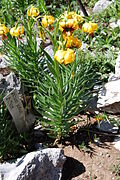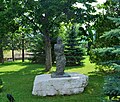 | Ćevapi is a grilled dish of minced meat, a type of kebab, found traditionally in the countries of southeastern Europe. They are considered a national dish in Bosnia and Herzegovina. |
 | Burek is a meat-filled flaky pastry, traditionally rolled in a spiral and cut into sections for serving. The same dish filled with cottage cheese is called sirnica, one with spinach zeljanica, and one with potatoes krompiruša. All these varieties are generically referred to as pita (Serbian, Bosnian and Croatian for pie). |
 | Sarma is a dish of grape, cabbage or chard leaves rolled around a filling usually based on minced meat, or a sweet dish of filo dough wrapped around a filling often of various kinds of chopped nuts. The Bosnian type includes rice and minced meat, as well as dried smoked beef. |
 | The Livno cheese is a cheese first produced in the 19th century in the area of Livno, region of Tropolje, on the basis of French technology of making the Gruyère cheese. Originally, it was made from sheep's milk and nowadays it is mainly made from a mixture of sheep's and cow's milk. |
 | Bosnian coffee is a type of Turkish coffee. Difference from the Turkish preparation is that when the water reaches its boiling point, a small amount is saved aside for later, usually in a coffee cup. Then, the coffee is added to the pot (džezva), and the remaining water in the cup is added to the pot. Everything is put back on the heat source to reach its boiling point again, which only takes a couple of seconds since the coffee is already very hot. Coffee drinking in Bosnia is a traditional daily custom and plays an important role during social gatherings. |




















